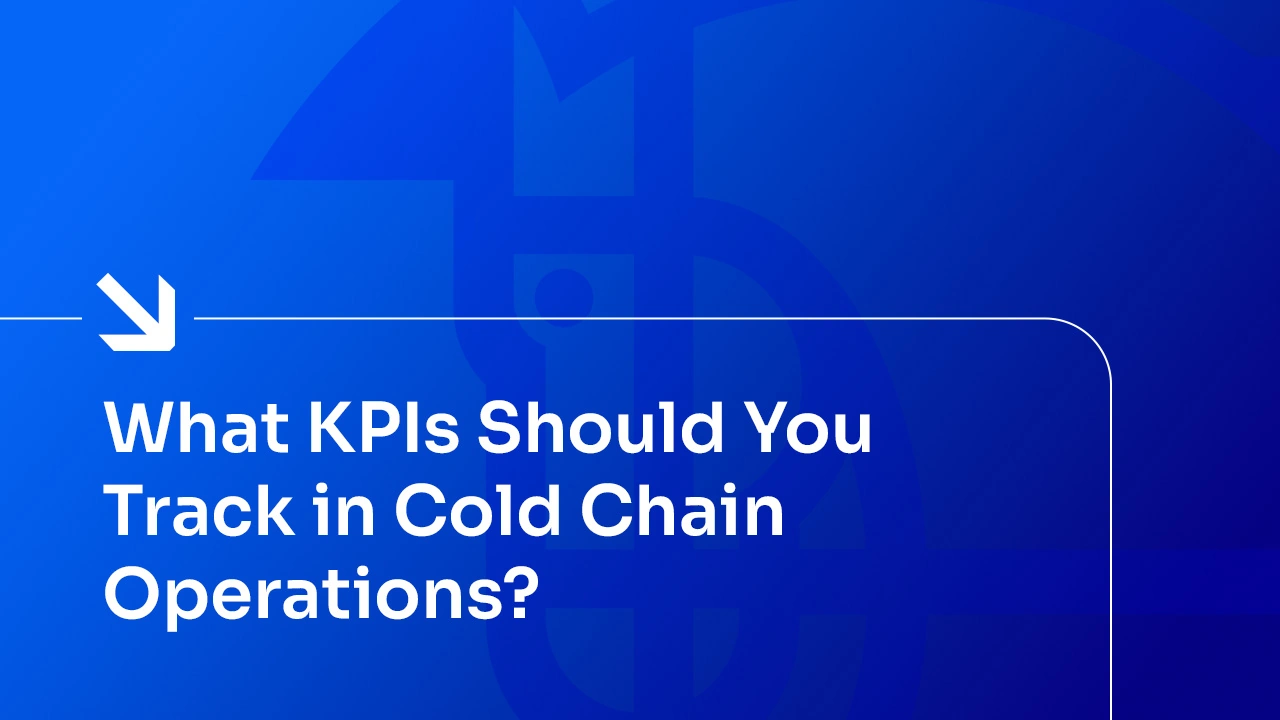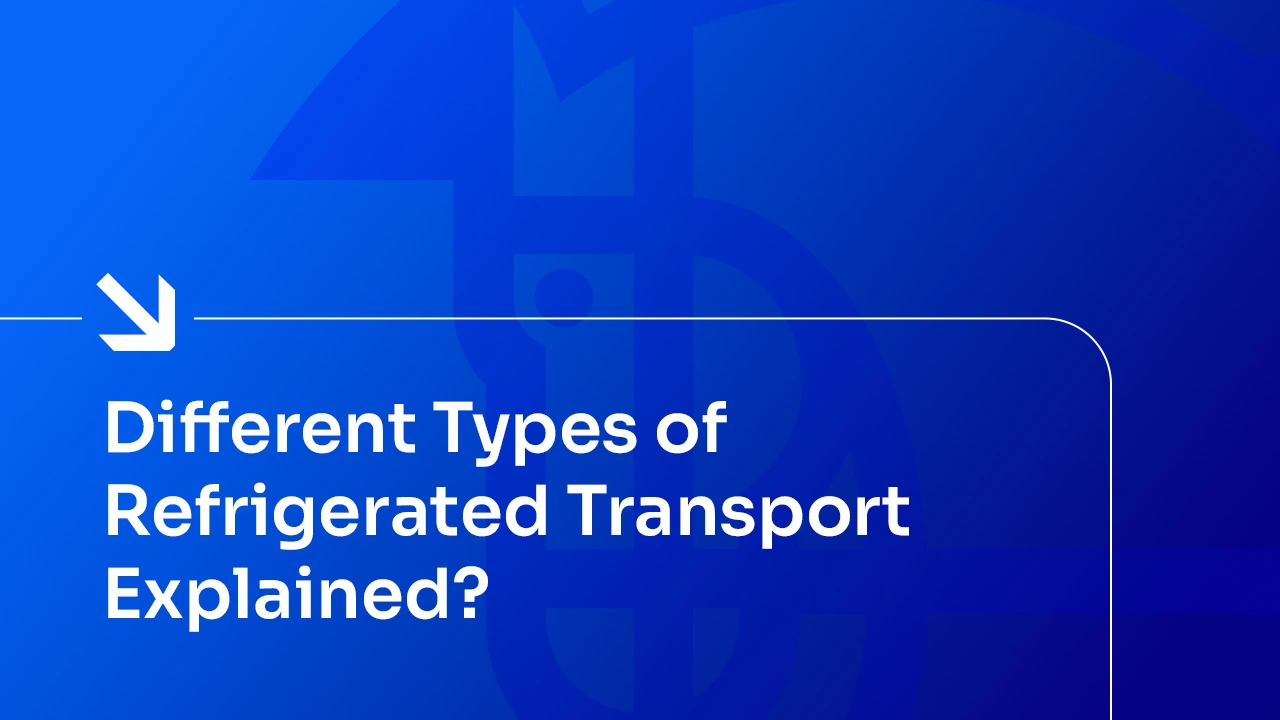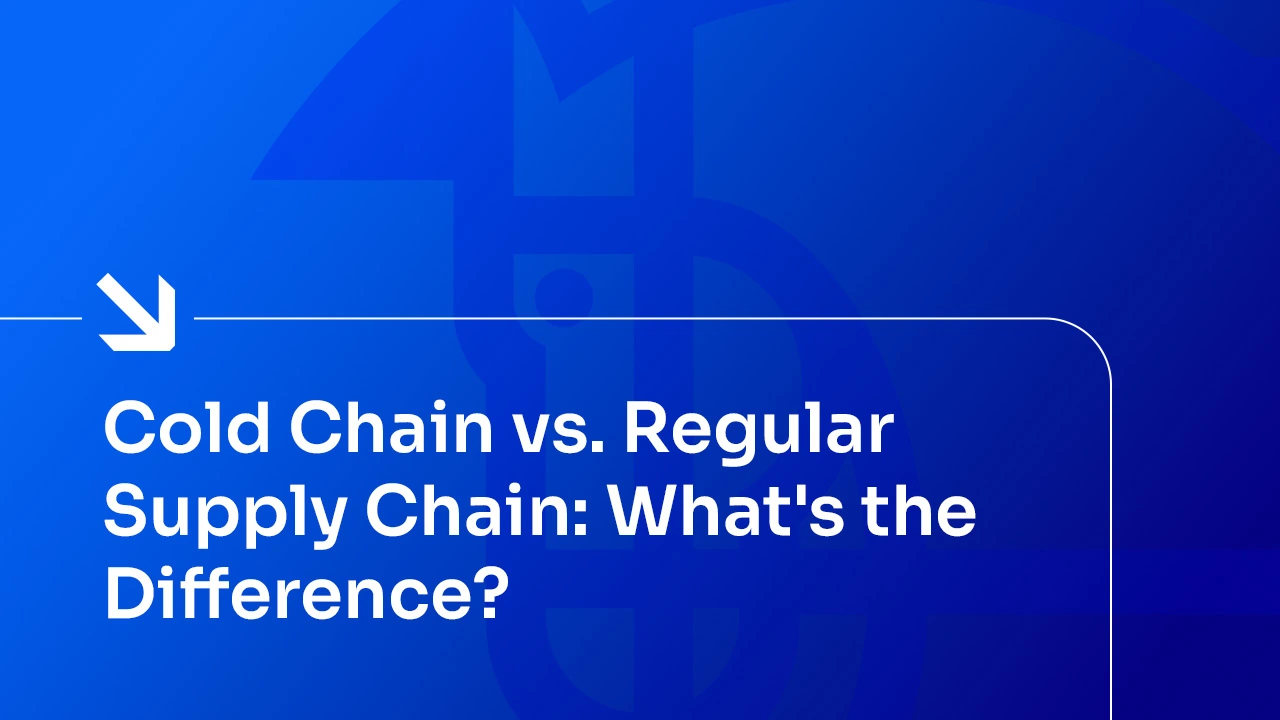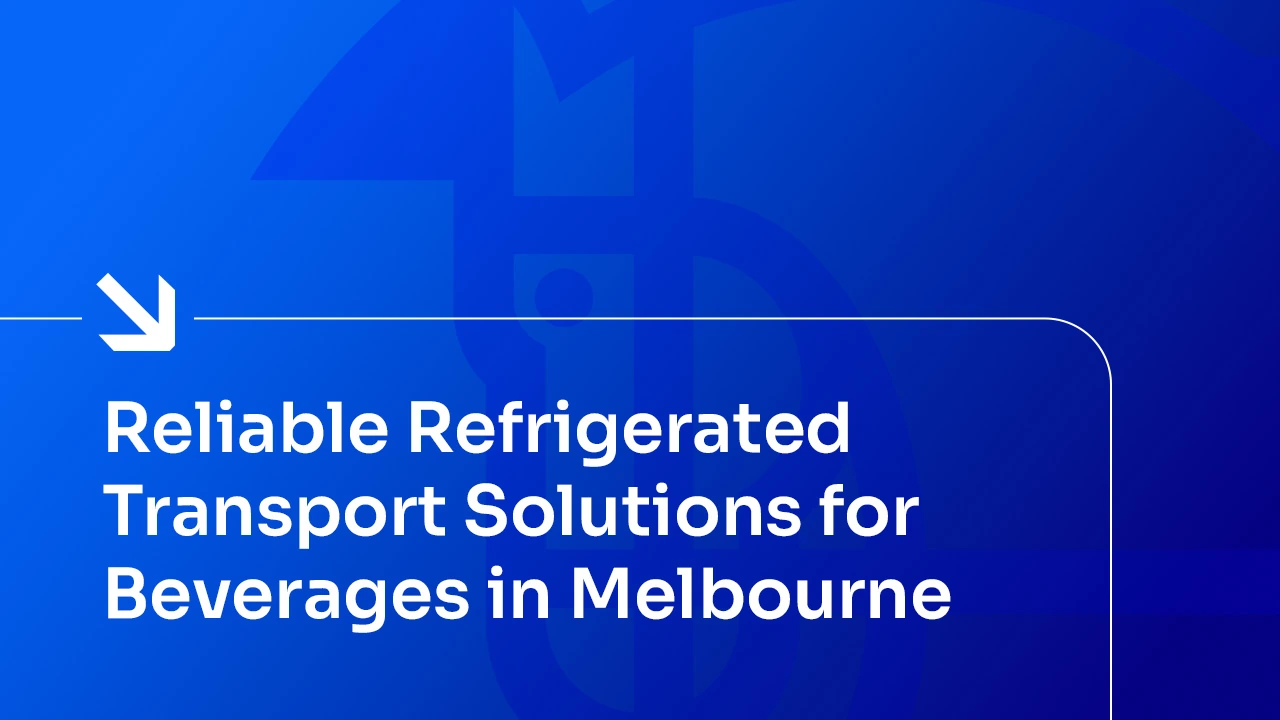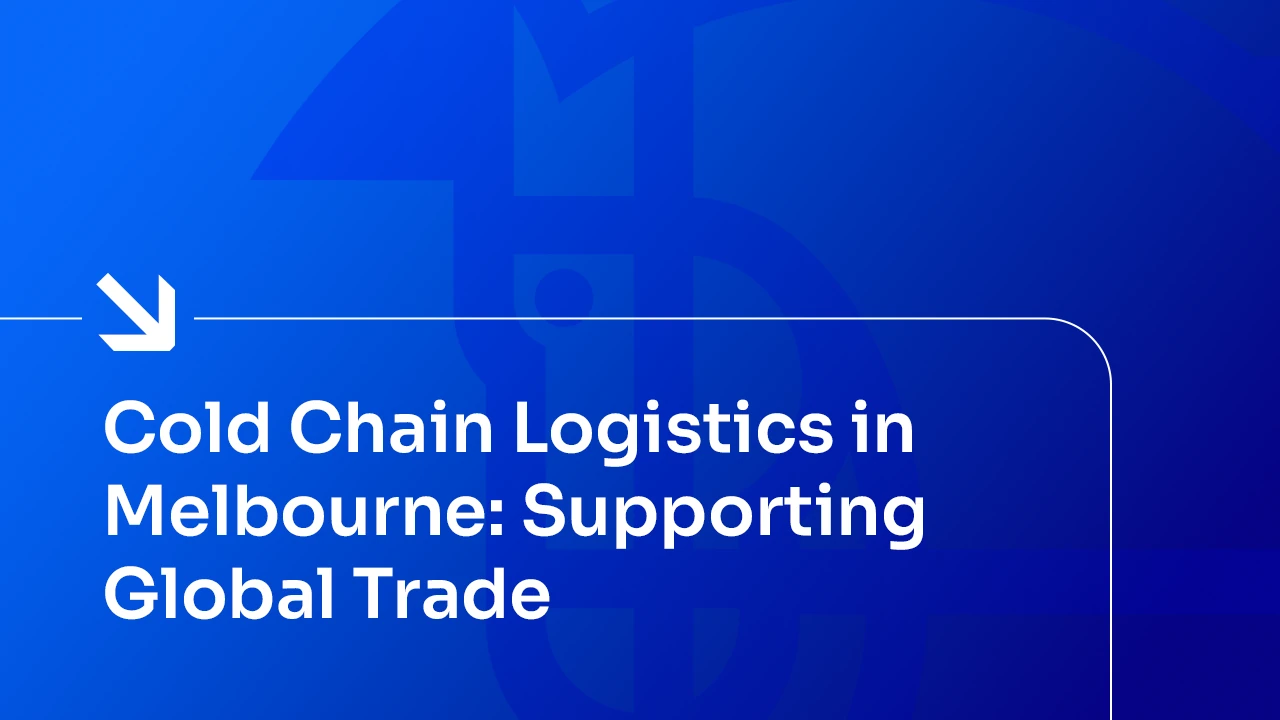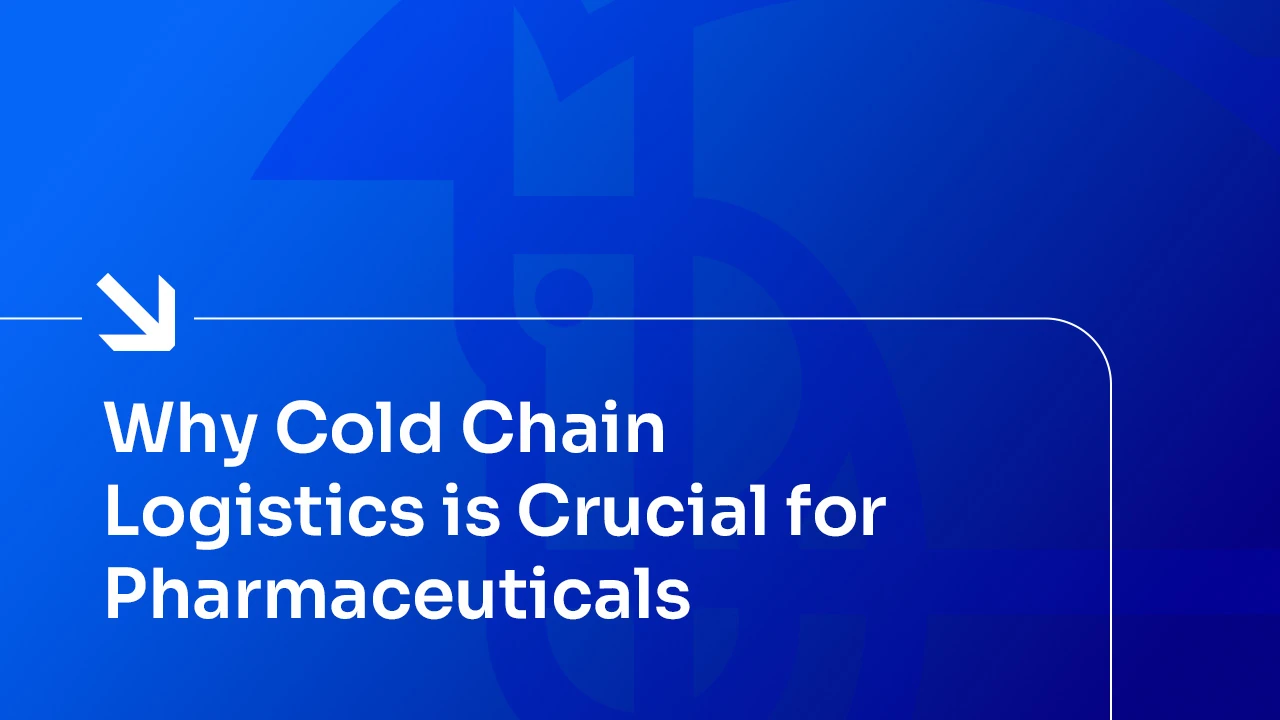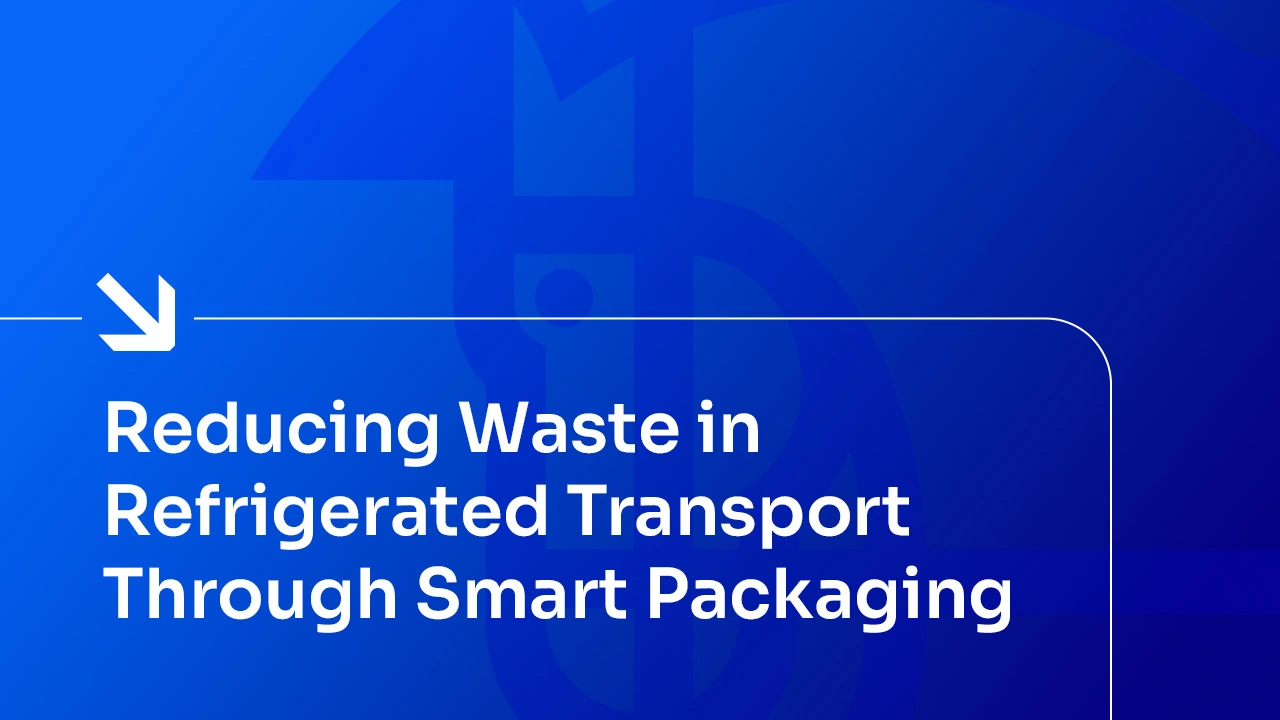Introduction to Cold Chain Logistics for Seafood
When it comes to ensuring that seafood reaches consumers in its freshest state, cold chain logistics plays a crucial role. In Melbourne, where seafood is an essential part of the food industry, maintaining the right temperature throughout transportation and storage is vital for preserving quality and safety. Cold chain logistics for seafood involves a temperature-controlled process that ensures seafood stays at the optimal temperature from the moment it’s harvested until it reaches its final destination.
In Melbourne, reliable refrigerated transport services and cold storage solutions are essential for keeping seafood fresh. Whether you’re a seafood distributor, restaurant owner, or wholesaler, understanding the importance of cold chain logistics can help ensure that the seafood you handle remains safe and delicious. Without proper temperature control, seafood can spoil quickly, losing its flavor, texture, and safety for consumption.
For seafood businesses in Melbourne, partnering with a trusted logistics provider like Colt Refrigerated Logistics ensures your products are transported with care, keeping them at the right temperature every step of the way. From reefer transport services to efficient cold storage for seafood, a strong cold chain logistics system helps extend the shelf life of seafood, reduce waste, and maintain the highest standards of food safety.
As the demand for fresh, quality seafood continues to grow, ensuring that cold chain logistics is handled properly will give your business a competitive edge. Whether you’re transporting frozen goods or temperature-sensitive logistics, the right cold chain services are essential to maintaining seafood quality in Melbourne and beyond.
What is Cold Chain Logistics?
Cold chain logistics is a temperature-controlled supply chain system used to transport and store perishable products, ensuring they remain fresh and safe for consumption. This system is especially important for goods like seafood, where maintaining a consistent temperature is crucial to preserving quality and preventing spoilage.
In cold chain logistics, the journey of a product—from production to delivery—requires specific temperature management to prevent any fluctuations that could compromise the product’s safety and quality. Whether it’s refrigerated transport, cold storage solutions, or reefer transport services, each step of the process ensures the product stays within the ideal temperature range throughout its journey.
For businesses in Melbourne, cold chain logistics is a must-have for industries like seafood, pharmaceuticals, and fresh produce. The importance of reliable temperature control can’t be overstated—any break in the cold chain could result in a significant loss of product quality or safety. This is where Colt Refrigerated Logistics comes in, offering tailored services in Melbourne refrigerated transport and efficient cold storage to keep your products in perfect condition.
The goal of cold chain logistics is simple: maintain the right temperature for goods that require refrigeration or freezing, whether they’re being shipped locally or internationally. This service not only ensures the freshness of seafood logistics but also helps reduce waste, lower costs, and meet safety standards. By partnering with a trusted provider in Melbourne, businesses can ensure that their temperature-sensitive goods—like seafood—arrive fresh and ready for market.
Best Practices for Cold Chain Logistics in Seafood Transport
When it comes to transporting seafood, maintaining the cold chain is essential for preserving freshness and quality. Proper cold chain logistics ensures that seafood remains safe for consumption and retains its optimal texture and flavor. Here are some best practices for cold chain logistics in seafood transport:
1. Consistent Temperature Control
The key to successful seafood logistics is consistent temperature management. Whether you’re using refrigerated transport or cold storage solutions, it’s crucial to maintain the correct temperature from the moment seafood is harvested until it reaches its destination. Fluctuations in temperature can lead to spoilage or the growth of harmful bacteria, compromising the safety of the product.
Using refrigerated transport services with real-time temperature monitoring ensures that the seafood stays within the ideal range throughout the journey. A reliable provider like Colt Refrigerated Logistics in Melbourne offers advanced tracking technology to monitor and adjust temperatures if necessary, ensuring the products remain at their best.
2. Proper Packaging
Packaging plays a critical role in preserving the quality of seafood during transport. Insulated packaging materials, such as foam containers or vacuum-sealed bags, help to maintain the right temperature and prevent exposure to air, which can cause spoilage. Properly packaged seafood is less likely to be affected by temperature changes, making it an important part of cold chain logistics.
3. Timely Delivery
Time is a critical factor when transporting perishable goods like seafood. The longer seafood sits in transit, the more likely it is to lose its quality. It’s important to ensure timely delivery, and this is where partnering with a logistics provider who offers efficient and fast refrigerated transport in Melbourne can make a big difference. By optimizing routes and reducing transport time, businesses can ensure that seafood reaches its destination as fresh as possible.
4. Regular Inspection and Maintenance of Equipment
Ensuring the refrigeration units and cold storage facilities are well-maintained is a key best practice in cold chain logistics. Regular inspections of the equipment used in cold storage for seafood or reefer transport services are necessary to avoid any unexpected failures that could lead to temperature fluctuations. Keeping the equipment in top condition helps prevent delays and costly losses.
5. Data Logging and Monitoring
Advancements in technology have made it easier to monitor and log temperature data throughout the entire cold chain. Cold chain distribution systems now offer real-time monitoring, which helps to track any issues that might arise during transport. By using data loggers or temperature sensors, you can ensure that your products are always kept at the right temperature, and any deviations can be quickly addressed to prevent spoilage.
By following these best practices, seafood businesses can maintain the highest standards of quality, reduce waste, and meet food safety regulations. Partnering with an experienced provider like Colt Refrigerated Logistics in Melbourne ensures that every aspect of your cold chain logistics is handled with care, from refrigerated transport to cold storage solutions.
Refrigerated Transport for Seafood in Melbourne
Refrigerated transport is one of the most critical aspects of cold chain logistics, especially when it comes to seafood. Seafood is highly perishable, and without the right temperature control during transit, it can spoil quickly, compromising both its quality and safety. In Melbourne, where seafood is a key part of the food industry, refrigerated transport services are essential for ensuring that seafood products arrive fresh and safe for consumption.
Why Refrigerated Transport is Crucial for Seafood
Seafood requires precise temperature control throughout its journey. Whether it’s fresh fish, shellfish, or frozen seafood, maintaining the ideal temperature range is necessary to prevent bacterial growth and preserve the product’s freshness. With cold chain logistics in Melbourne, using refrigerated transport guarantees that the seafood stays at the right temperature, typically between 0°C to 4°C for fresh seafood or below -18°C for frozen goods.
Using refrigerated logistics ensures that seafood is protected from temperature fluctuations that could cause spoilage or a decline in quality. This makes it a top choice for businesses in Melbourne that need to transport seafood over long distances or to multiple locations while maintaining freshness.
Benefits of Refrigerated Transport for Seafood
-
Preserves Quality: Refrigerated transport helps maintain the texture, flavor, and appearance of seafood, ensuring it reaches the market in prime condition. This is especially important for businesses that supply restaurants, retailers, or consumers expecting the highest quality.
-
Reduces Waste: By ensuring seafood remains at the right temperature, refrigerated transport reduces the risk of spoilage and waste. For businesses in Melbourne, this can result in significant cost savings and a more sustainable operation.
-
Ensures Compliance with Regulations: The food industry is heavily regulated, especially when it comes to temperature-sensitive goods like seafood. Reliable refrigerated transport services ensure that businesses comply with health and safety standards, avoiding potential fines or product recalls.
-
Time-Sensitive Deliveries: Seafood is often time-sensitive, requiring quick and efficient delivery. Refrigerated transport ensures fast delivery without compromising the quality of the product. This is crucial for businesses aiming to meet customer expectations and demand.
Colt Refrigerated Logistics: Your Partner for Seafood Transport in Melbourne
For businesses in Melbourne, choosing a trusted logistics provider like Colt Refrigerated Logistics ensures peace of mind when it comes to seafood transport. Colt specializes in refrigerated transport for seafood logistics, offering temperature-controlled vehicles that are equipped with advanced monitoring systems to maintain consistent conditions throughout the journey.
By opting for Colt’s refrigerated logistics services, businesses can rely on real-time temperature tracking, ensuring that every shipment of seafood arrives fresh and safe. Whether you’re looking for a one-off delivery or ongoing transport solutions, Colt’s experience and expertise in cold chain logistics in Melbourne make them the ideal partner for your seafood transportation needs.
In summary, refrigerated transport for seafood is vital to ensure quality, reduce waste, and meet industry standards. By working with a reliable logistics provider, you can be confident that your seafood will reach its destination in perfect condition, ready for sale or consumption.
Cold Storage for Seafood: Why It’s Crucial
Cold storage is an essential part of the cold chain logistics process, particularly when it comes to seafood. Seafood is highly perishable, and without the right temperature control, it can spoil quickly, compromising its quality and safety. Whether you’re a seafood distributor, retailer, or restaurant owner in Melbourne, ensuring your seafood is properly stored at the right temperature is key to maintaining its freshness and extending its shelf life.
The Role of Cold Storage in Seafood Logistics
Cold storage is used to keep seafood at a consistently low temperature, which is crucial for slowing down the natural decay process. By maintaining an optimal temperature, cold storage helps prevent bacterial growth and spoilage, ensuring that seafood remains fresh for a longer period. In Melbourne, where seafood is a staple in many businesses, reliable cold storage solutions are necessary for both short-term and long-term preservation.
For fresh seafood, cold storage typically involves keeping the products at temperatures between 0°C and 4°C, while frozen seafood requires temperatures below -18°C. Cold storage for seafood ensures that these products remain safe for consumption, retain their texture, flavor, and nutritional value, and are ready to be distributed to customers when needed.
Why Cold Storage is Essential for Seafood Businesses
-
Preserving Freshness and Quality: Cold storage keeps seafood in the best possible condition, ensuring that it reaches customers with the highest quality. For businesses in Melbourne, this is particularly important for those dealing with high-demand products where maintaining the freshest seafood is key to customer satisfaction.
-
Reducing Waste: By storing seafood at the right temperature, businesses can reduce the risk of spoilage, leading to less waste and greater cost savings. Proper cold storage significantly extends the shelf life of seafood, making it easier for businesses to manage their inventory and reduce losses.
-
Compliance with Health Standards: The seafood industry is heavily regulated, and adhering to proper cold storage protocols is necessary to meet food safety standards. Keeping seafood in temperature-controlled environments ensures that businesses comply with these regulations and avoid costly penalties or product recalls.
-
Improved Supply Chain Efficiency: Cold storage plays a critical role in streamlining the supply chain. By using advanced cold storage solutions, businesses can ensure that seafood is readily available when needed, minimizing delays and ensuring faster delivery to customers. This is crucial for maintaining a reliable supply of fresh seafood.
Colt Refrigerated Logistics: Your Trusted Cold Storage Provider in Melbourne
For seafood businesses in Melbourne, Colt Refrigerated Logistics offers top-tier cold storage solutions designed to maintain the freshness and safety of your products. With state-of-the-art cold storage facilities and a team of experts who understand the specific needs of seafood logistics, Colt ensures that your products are stored at the ideal temperature, ready for transport or sale.
Colt’s cold chain logistics services also include real-time temperature monitoring, so you can have peace of mind knowing that your seafood is being stored under optimal conditions. Whether you’re looking for short-term storage during transport or long-term cold storage for inventory management, Colt Refrigerated Logistics has the experience and technology to meet your needs.
In conclusion, cold storage for seafood is essential for preserving freshness, reducing waste, and ensuring compliance with health standards. By partnering with a trusted logistics provider like Colt Refrigerated Logistics in Melbourne, seafood businesses can ensure their products are stored and handled with the highest level of care and efficiency.
Reefer Transport: A Vital Component of Seafood Logistics
When it comes to transporting seafood, maintaining the right temperature is crucial. This is where reefer transport plays a vital role in ensuring that seafood remains fresh and safe for consumption. Reefer transport involves the use of refrigerated containers or vehicles that are equipped to control and maintain a specific temperature throughout the journey. For seafood businesses in Melbourne, reefer transport is one of the most reliable solutions for safe, efficient, and timely delivery of temperature-sensitive goods.
What is Reefer Transport?
Reefer transport refers to any type of transport that uses temperature-controlled equipment, typically known as reefers, to preserve perishable goods during transit. These vehicles or containers are designed to keep the cargo at a consistent temperature, whether it’s chilled or frozen. For seafood, this is essential to maintain the optimal freshness, texture, and flavor.
In Melbourne, where seafood logistics are a significant part of the food supply chain, reefer transport services are critical for meeting customer demand and ensuring that seafood products reach their destination in the best possible condition. Whether it’s fresh fish or frozen seafood, reefer transport helps to mitigate the risks of spoilage that come with temperature fluctuations.
Why Reefer Transport is Crucial for Seafood Logistics
-
Temperature Control During Transit: The primary benefit of reefer transport is that it maintains consistent temperature control throughout the journey. For seafood, this means preventing temperature changes that could lead to spoilage, loss of quality, or food safety issues. Reefer transport is crucial for both chilled and frozen seafood, ensuring that each product arrives fresh and safe.
-
Flexible Solutions for Different Needs: Different types of seafood require different temperature conditions, and reefer transport can be adjusted accordingly. For fresh seafood, the temperature typically needs to be between 0°C and 4°C, while frozen seafood requires a much lower temperature. Using reefer transport allows businesses to customize the temperature settings to meet the specific needs of their products.
-
Compliance with Safety Standards: In Melbourne, as in many places, food safety regulations require seafood to be transported at the correct temperature to prevent the growth of harmful bacteria. Reefer transport services ensure that businesses comply with these regulations, helping to avoid potential fines and penalties while also ensuring the safety of consumers.
-
Reduced Risk of Spoilage and Waste: By maintaining a consistent temperature throughout the journey, reefer transport reduces the risk of spoilage and waste. This is particularly important for seafood, where the freshness of the product can be affected by even a small deviation in temperature. For businesses looking to reduce loss and maximize profits, reefer transport offers a dependable solution.
Why Choose Colt Refrigerated Logistics for Seafood Cold Chain Solutions?
When it comes to transporting and storing seafood, choosing the right logistics provider is crucial. Seafood is highly perishable, and even small temperature fluctuations can impact its quality and safety. That’s why Colt Refrigerated Logistics is the ideal partner for seafood businesses in Melbourne looking for reliable and efficient cold chain logistics solutions. Here’s why Colt stands out as the go-to provider for all your seafood cold chain needs.
1. Expertise in Seafood Logistics
Colt Refrigerated Logistics specializes in handling cold chain logistics for seafood, with years of experience in managing temperature-sensitive goods. Whether you need refrigerated transport, cold storage, or reefer transport services, Colt has the expertise to ensure your seafood is stored and transported under the right conditions. Their team understands the specific requirements of seafood logistics and provides tailored solutions to meet the unique needs of your business.
2. State-of-the-Art Temperature-Controlled Services
One of the key benefits of choosing Colt is their investment in advanced, temperature-controlled technology. Colt uses the latest cold storage solutions and refrigerated transport systems to ensure that your seafood remains at the ideal temperature throughout the entire journey. Whether it’s fresh fish, shellfish, or frozen seafood, Colt’s technology helps maintain the perfect conditions to preserve freshness, flavor, and safety.
3. Real-Time Temperature Monitoring
To further ensure the safety and quality of your products, Colt provides real-time temperature monitoring for all shipments. With cold chain logistics in Melbourne, having access to live data on temperature fluctuations gives you peace of mind, knowing that your seafood is always stored and transported in the best conditions. Any deviations from the ideal temperature range are immediately flagged, allowing for quick corrective actions.
4. Reliability and Timeliness
In the seafood industry, time is critical. Freshness is everything, and delays can lead to significant losses. Colt Refrigerated Logistics is known for its punctuality and reliability, ensuring your seafood reaches its destination on time, every time. With a strong focus on efficient cold storage and refrigerated transport, Colt guarantees that your seafood is delivered swiftly and in pristine condition.
5. Compliance with Industry Standards
Food safety is a top priority for Colt. They understand the regulations and standards that govern the transportation and storage of seafood, ensuring that all procedures meet local and international safety guidelines. By choosing Colt, you can be confident that your seafood logistics are compliant with all relevant health and safety standards, reducing the risk of fines, recalls, or spoilage.
6. Customized Cold Chain Solutions
No two seafood shipments are the same, and Colt offers customized solutions to meet the specific needs of your business. Whether you need short-term cold storage or long-haul reefer transport, Colt provides flexible options that cater to your requirements. Their team works closely with you to develop a logistics plan that optimizes your supply chain, improves efficiency, and minimizes waste.
7. Sustainable Practices
Colt Refrigerated Logistics is committed to sustainability and reducing the environmental impact of their operations. By using energy-efficient technologies and environmentally friendly practices, Colt helps businesses reduce their carbon footprint while maintaining high-quality cold chain logistics services. This is particularly important for businesses looking to align with sustainable practices while still ensuring the safe delivery of their seafood.
Common Challenges in Cold Chain Logistics for Seafood and How to Overcome Them
Cold chain logistics for seafood is essential for maintaining freshness and ensuring safety, but it’s not without its challenges. From temperature fluctuations to delays, several factors can impact the integrity of the seafood supply chain. Understanding these challenges and knowing how to address them is crucial for businesses in Melbourne that rely on cold chain logistics to deliver high-quality seafood. Here are some of the most common challenges and ways to overcome them.
1. Temperature Fluctuations
One of the biggest risks in cold chain logistics for seafood is temperature fluctuations. If seafood is exposed to temperatures outside its optimal range, even for a short period, it can spoil quickly. This is particularly concerning for fresh seafood, which needs to be kept at temperatures between 0°C and 4°C to maintain its quality.
How to Overcome It: To mitigate this risk, it’s essential to use reliable refrigerated transport and cold storage solutions with real-time temperature monitoring. By partnering with experienced logistics providers like Colt Refrigerated Logistics, you can ensure that your seafood stays within the required temperature range throughout the entire journey. Advanced monitoring systems also alert you to any temperature deviations, allowing for quick corrective action.
2. Delays in Transit
Delays are another common issue that can negatively affect the quality of seafood. Whether due to traffic, equipment failures, or other logistical hurdles, delays in transit can result in seafood being exposed to warmer temperatures for longer periods, leading to spoilage or loss of texture and flavor.
How to Overcome It: Working with a logistics provider who offers efficient cold storage and refrigerated transport services can help minimize delays. Colt Refrigerated Logistics focuses on timely deliveries by optimizing routes and ensuring that their reefer transport services are reliable. By choosing a provider with a track record of punctuality and efficiency, you can reduce the risk of delays and ensure your seafood is delivered on time.
3. Inadequate Packaging
Proper packaging is crucial for maintaining the quality of seafood during transport. Poor or insufficient packaging can lead to temperature fluctuations, contamination, or physical damage to the products. This is especially problematic for fragile seafood items like fish fillets or shellfish, which require special care during transit.
How to Overcome It: To ensure the safety and freshness of seafood, use high-quality, insulated packaging materials that maintain the required temperature and protect the products from external factors. This might include vacuum-sealed bags, insulated boxes, or gel packs. Additionally, a logistics partner experienced in cold chain solutions for seafood will ensure that the packaging meets industry standards and protects the seafood during transit.
4. Regulatory Compliance
The seafood industry is subject to strict food safety and health regulations. Ensuring compliance with these regulations is a significant challenge for businesses involved in seafood logistics. Failure to meet compliance requirements can result in fines, product recalls, and loss of consumer trust.
How to Overcome It: To stay compliant, businesses must work with logistics providers who are well-versed in the regulations governing cold chain logistics for seafood. Colt Refrigerated Logistics ensures that all their cold storage and refrigerated transport services meet local and international food safety standards. They also offer real-time monitoring and detailed records of temperature logs, which help businesses meet compliance and avoid costly penalties.
5. Handling Perishable Goods with Care
Seafood is delicate and must be handled with care during transport. The risk of damage increases during transit, especially if the seafood is handled improperly, leading to loss of product quality. Seafood needs to be stored and transported in a way that maintains its texture, flavor, and nutritional value.
How to Overcome It: Partnering with a provider like Colt Refrigerated Logistics, which specializes in reliable cold chain solutions for seafood, ensures that the products are handled with care at every stage of the journey. From reefer transport to cold storage, Colt focuses on preserving the quality and safety of seafood by using the right equipment and trained staff who understand the unique handling needs of seafood.
6. High Operational Costs
Cold chain logistics, particularly for seafood, can be expensive. The cost of maintaining temperature-controlled environments, along with the need for specialized equipment and handling, can add up quickly. However, inefficiencies or poor logistics planning can lead to wasted resources, making the process even more costly.
How to Overcome It: To keep operational costs under control, it’s essential to work with a logistics provider that offers efficient cold storage and refrigerated transport services. Colt Refrigerated Logistics uses advanced technology and optimized routing to reduce transit times and lower fuel consumption. Additionally, their experience helps businesses avoid waste and minimize unnecessary costs associated with spoilage or delays.
FAQs about Cold Chain Logistics for Seafood in Melbourne
If you’re involved in the seafood business in Melbourne, understanding the essentials of cold chain logistics is crucial for maintaining the quality and safety of your products. Here are some frequently asked questions about cold chain logistics for seafood that will help you navigate the process and ensure your seafood is delivered fresh and safe.
1. What is cold chain logistics, and why is it important for seafood?
Cold chain logistics is a system that uses temperature-controlled processes to transport and store perishable goods. For seafood, this is crucial because seafood is highly perishable and can spoil quickly if not kept at the proper temperature. Maintaining a consistent cold chain from harvest to delivery ensures that seafood stays fresh, safe, and retains its quality throughout its journey.
2. What temperatures should seafood be stored and transported at?
For seafood logistics, fresh seafood should be stored and transported at temperatures between 0°C and 4°C. For frozen seafood, the required temperature is typically below -18°C. It’s essential to maintain these temperature ranges consistently throughout the cold chain to prevent spoilage and bacteria growth, ensuring the product remains safe for consumption.
3. How does refrigerated transport work for seafood?
Refrigerated transport is a method of using temperature-controlled vehicles or containers to transport seafood, keeping it at the appropriate temperature during transit. This is especially important for seafood, as even small temperature fluctuations can affect the product’s quality. Refrigerated transport ensures that seafood reaches its destination fresh and safe, whether it’s for local delivery or international shipping.
4. Why is reefer transport important for seafood logistics?
Reefer transport refers to the use of refrigerated containers or trucks designed specifically for transporting perishable goods like seafood. This transport method ensures consistent temperature control, preventing spoilage and maintaining freshness. Reefer transport is essential for seafood businesses, as it guarantees that products are kept in optimal conditions throughout transit, from point A to point B.
5. How do I ensure proper storage for seafood in cold storage facilities?
Proper cold storage involves using temperature-controlled environments that maintain the correct conditions for fresh or frozen seafood. The storage facility should regularly monitor temperatures and use packaging that protects the seafood from contamination and temperature fluctuations. By partnering with a reliable provider like Colt Refrigerated Logistics, you can ensure that your seafood is stored properly, extending its shelf life and keeping it safe for consumption.
6. How can I monitor the temperature of my seafood during transport?
With advancements in technology, it’s now easier than ever to monitor the temperature of seafood during transport. Many logistics providers, including Colt Refrigerated Logistics, offer real-time temperature tracking systems that allow you to check the status of your seafood shipments throughout the journey. This technology ensures that the seafood stays within the required temperature range and alerts you to any issues in real-time, so you can take corrective actions immediately.
7. Why is timely delivery crucial in seafood logistics?
Seafood is highly perishable, and the longer it spends in transit, the higher the risk of spoilage. Timely delivery ensures that seafood reaches its destination quickly, maintaining its freshness and quality. By partnering with a logistics provider that prioritizes fast and efficient service, businesses can avoid unnecessary delays that might impact the quality of their seafood and keep customers satisfied.
8. What are the regulatory requirements for seafood cold chain logistics?
The seafood industry is regulated by strict food safety guidelines, and it’s essential to follow these standards during transport and storage. These regulations ensure that seafood is handled at the proper temperatures and conditions throughout the cold chain. Choosing a logistics provider with expertise in seafood logistics, such as Colt Refrigerated Logistics, ensures that all transport and storage comply with local and international food safety standards, reducing the risk of penalties or product recalls.
9. What are the common challenges in seafood cold chain logistics?
Some common challenges include temperature fluctuations, delays in transit, inadequate packaging, and regulatory compliance issues. Temperature fluctuations can lead to spoilage, while delays can result in seafood losing its freshness. Poor packaging can also cause contamination or exposure to unsuitable temperatures. Working with an experienced provider who specializes in cold chain logistics for seafood, like Colt Refrigerated Logistics, helps mitigate these challenges and ensures that your seafood stays fresh, safe, and compliant with regulations.
10. How can Colt Refrigerated Logistics help with seafood cold chain solutions?
Colt Refrigerated Logistics offers a range of services designed to meet the specific needs of seafood businesses. From refrigerated transport and cold storage solutions to real-time temperature monitoring, Colt ensures that your seafood is always kept in the optimal conditions. Their expertise in cold chain logistics for seafood, combined with reliable and efficient service, helps businesses maintain the quality and safety of their products while minimizing waste and complying with food safety regulations.


